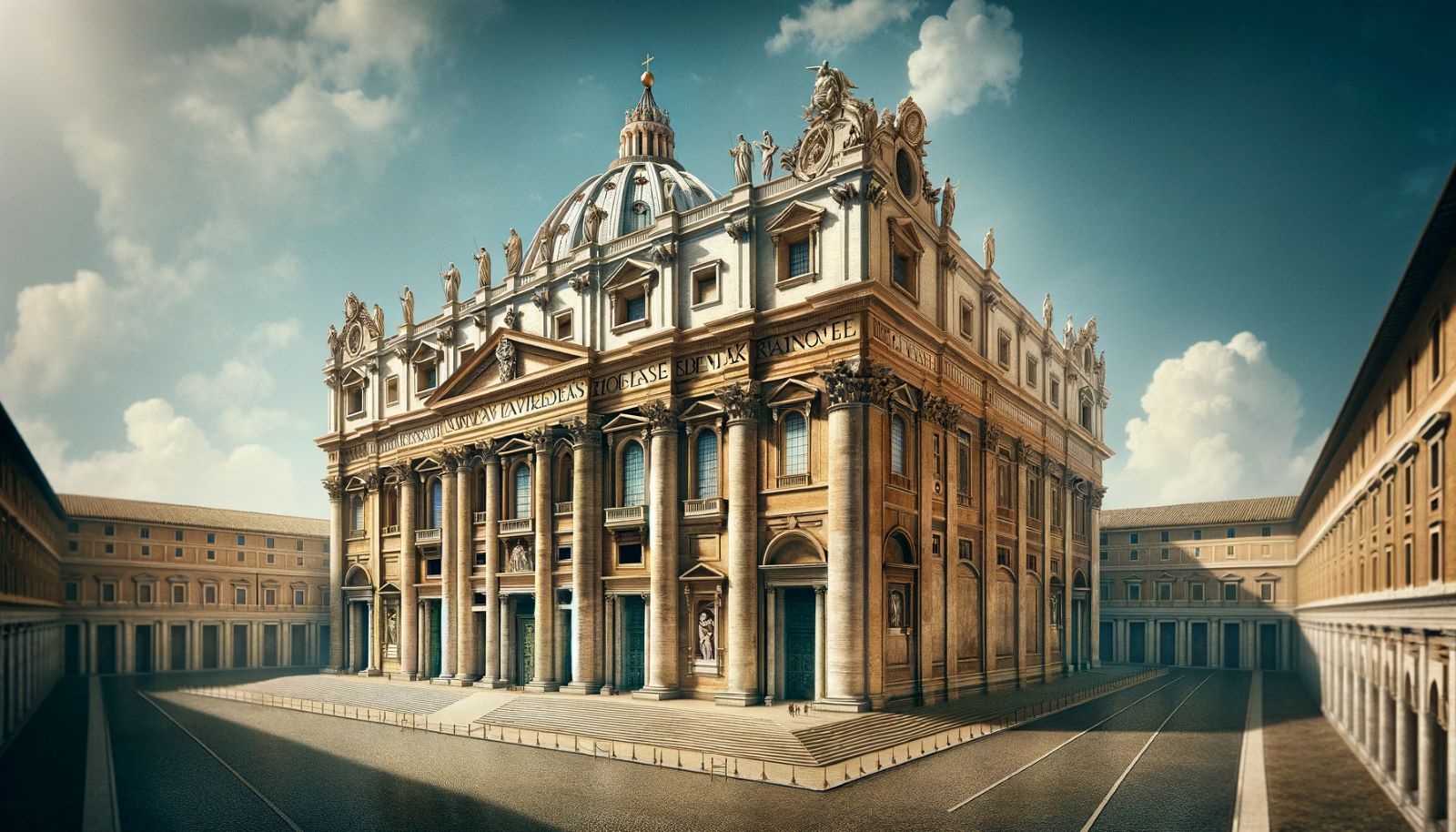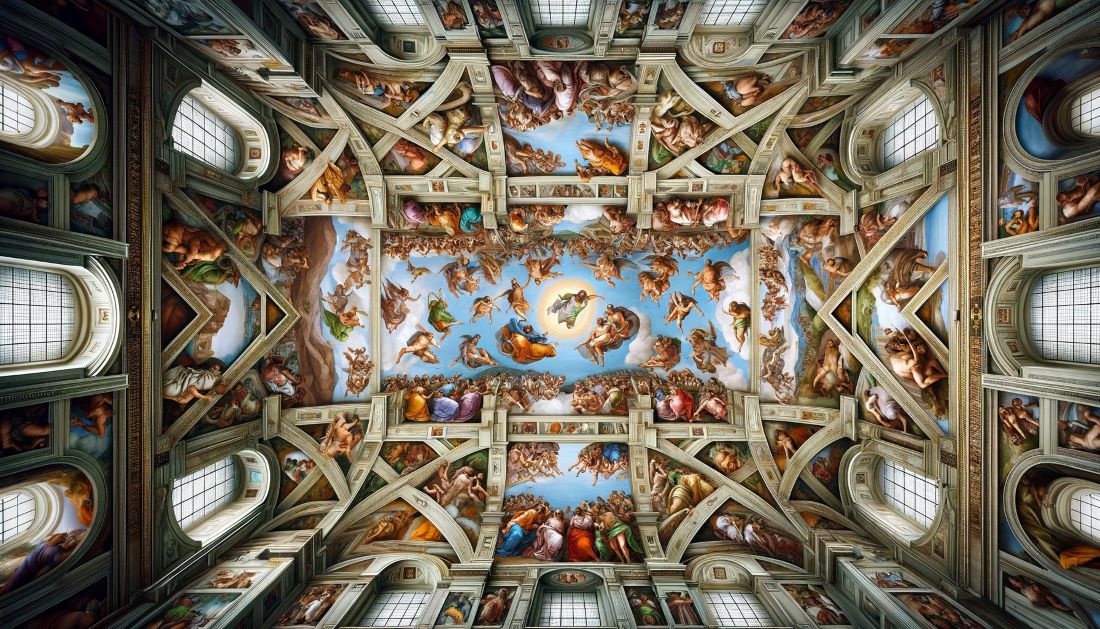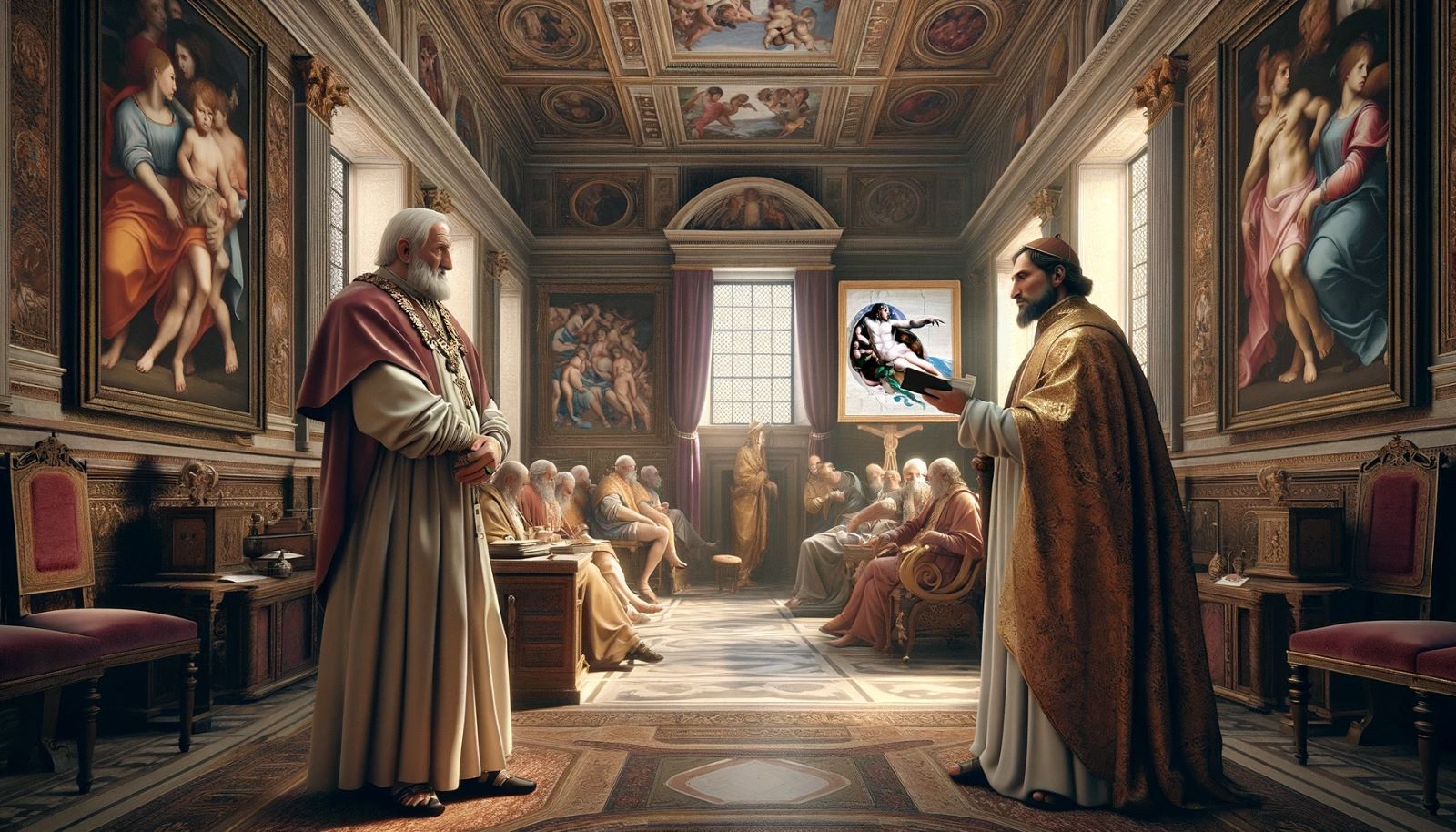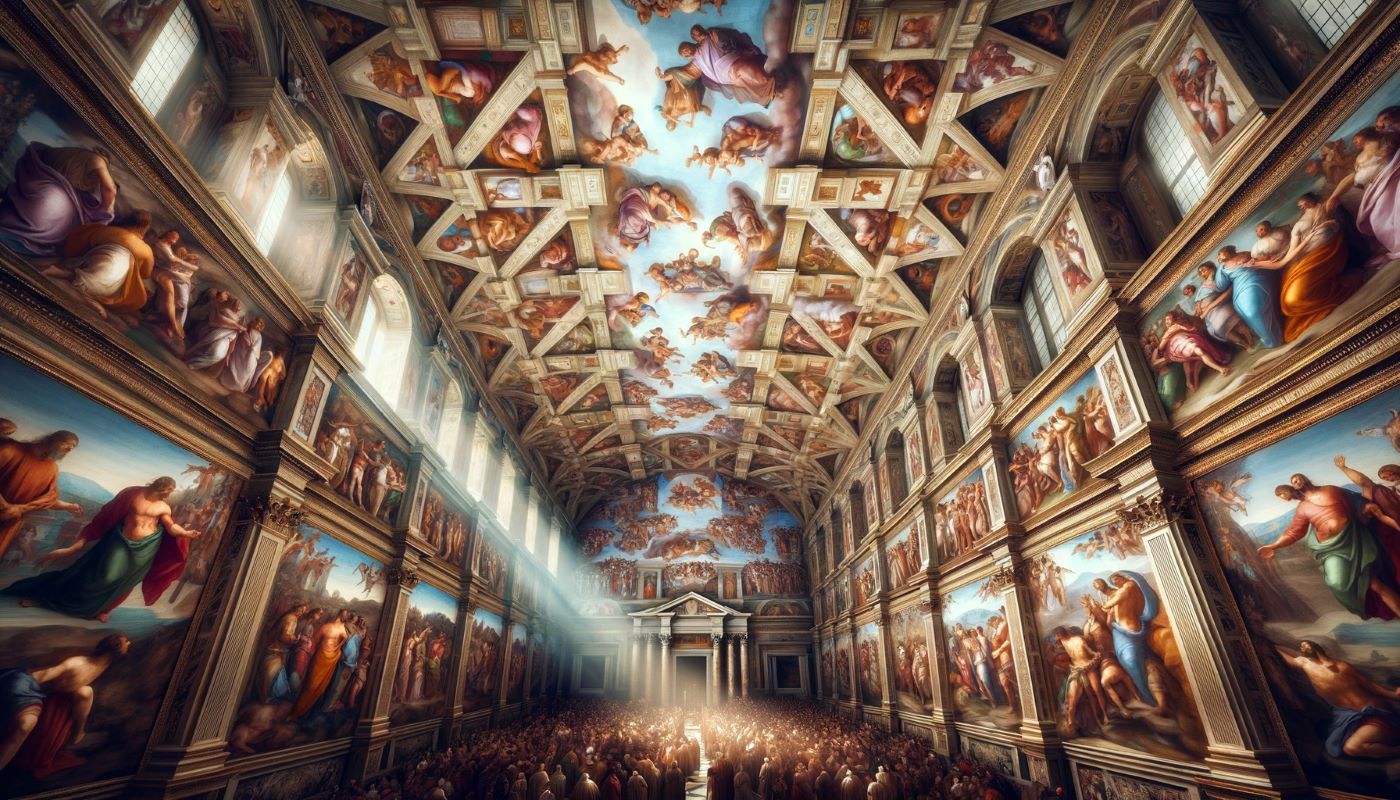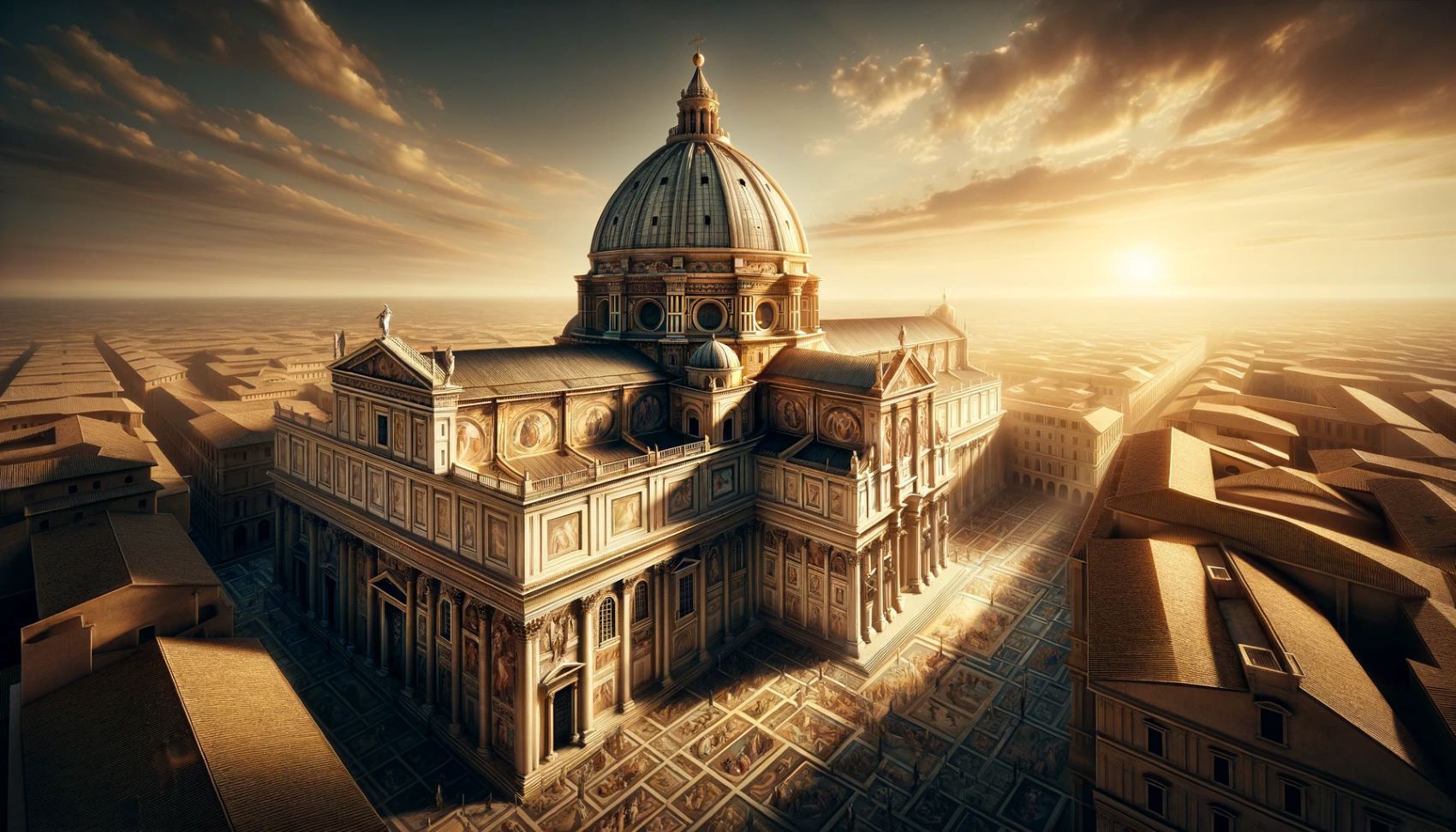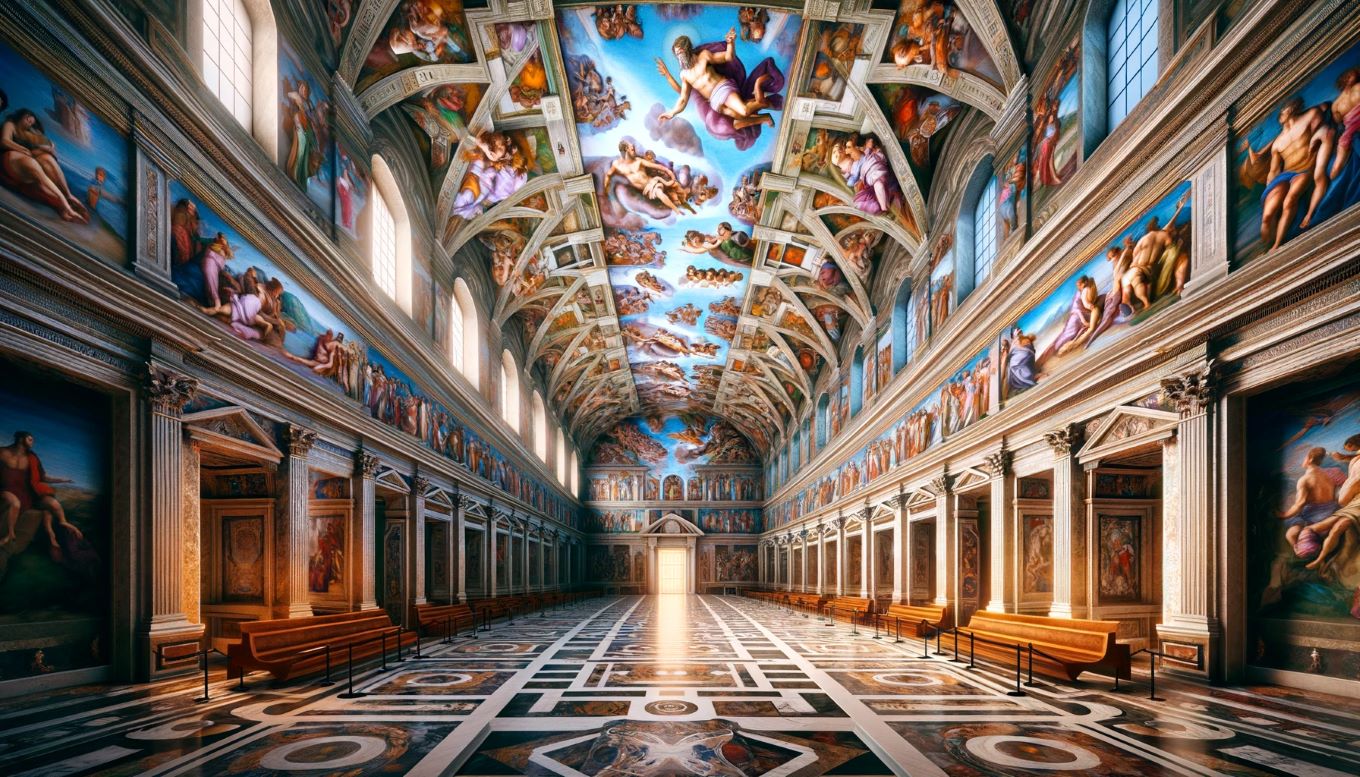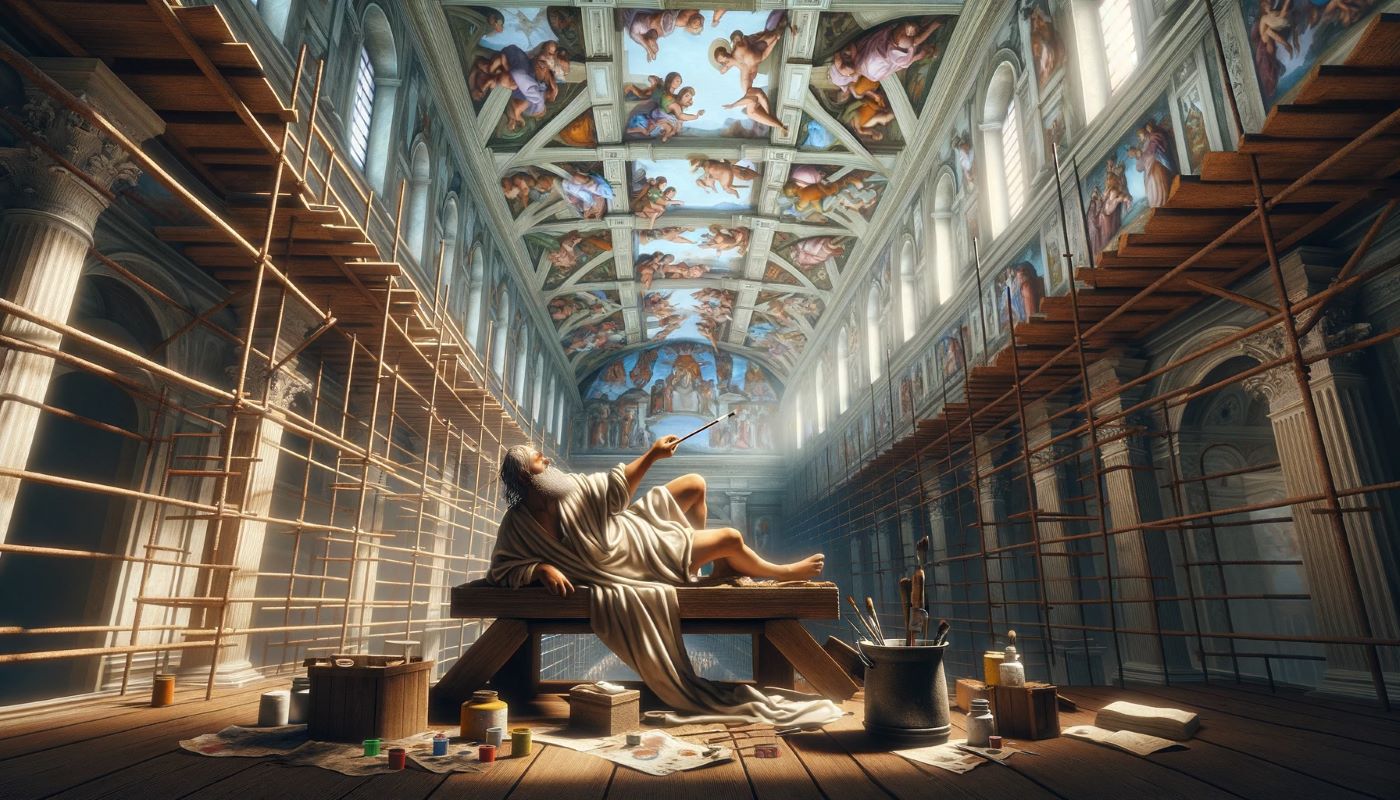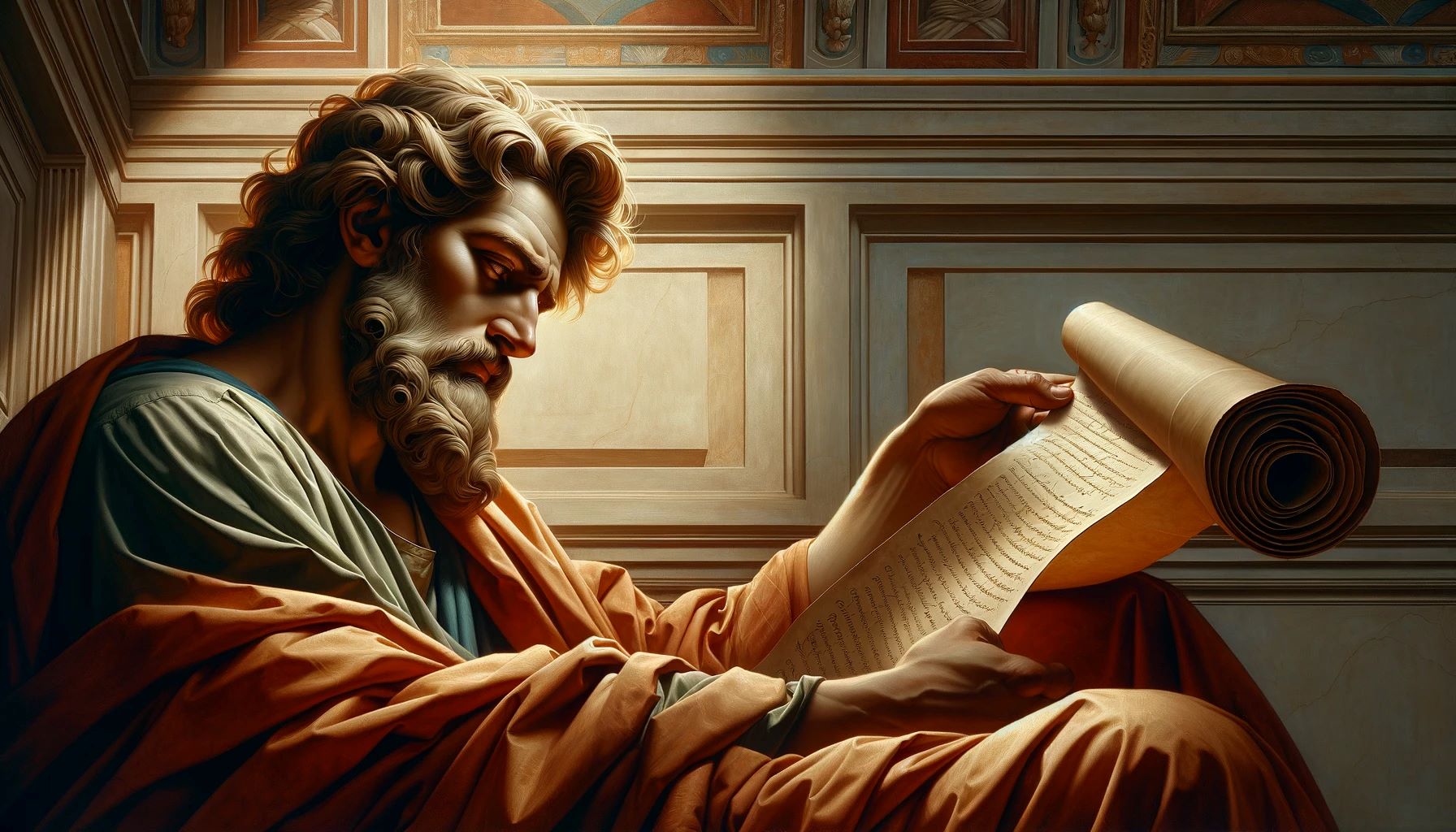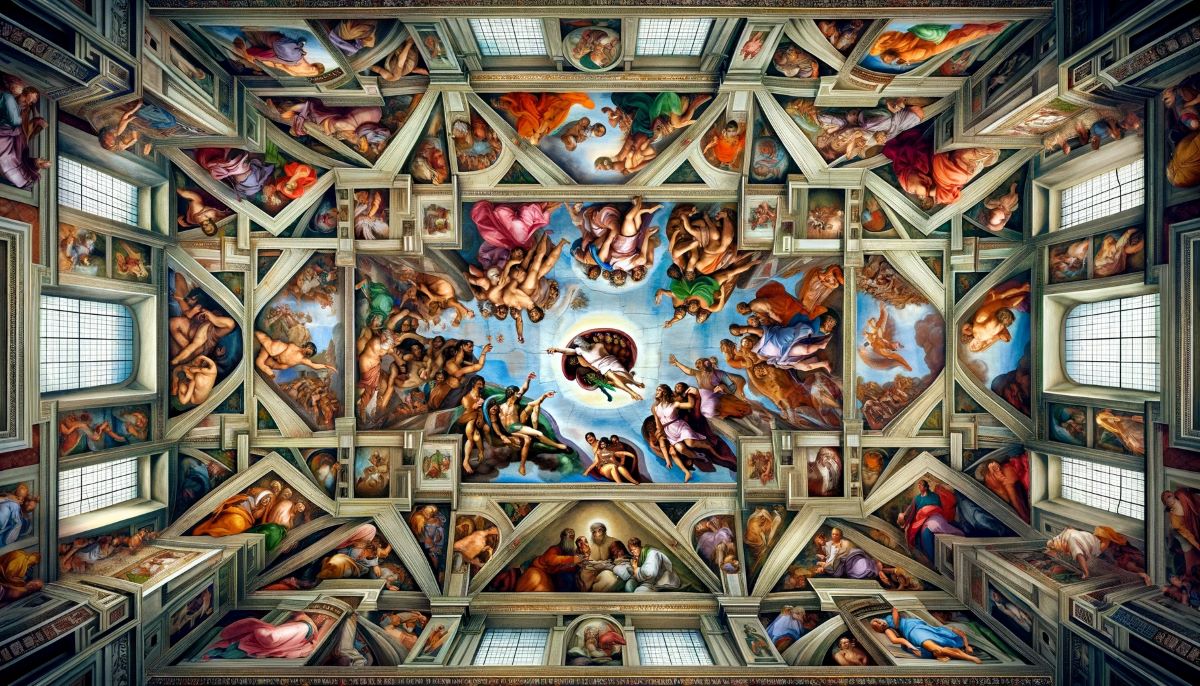Home>Arts and Culture>Who Was The Sistine Chapel For


Arts and Culture
Who Was The Sistine Chapel For
Published: March 4, 2024
Ericka Andersen, an editor at Christian.net, expertly merges digital strategy with content creation, focusing on faith and societal issues. Her communication skills enhance the platform's engaging narratives, fostering meaningful dialogue on belief's impact on society.
Discover the history and significance of the Sistine Chapel, a masterpiece of arts and culture that continues to captivate visitors with its timeless beauty and religious significance. Explore the story behind this iconic masterpiece and its enduring impact on art and culture.
(Many of the links in this article redirect to a specific reviewed product. Your purchase of these products through affiliate links helps to generate commission for Christian.net, at no extra cost. Learn more)
Table of Contents
Introduction
Who was the Sistine Chapel for? This question has intrigued art historians, religious scholars, and enthusiasts for centuries. The Sistine Chapel, located in Vatican City, is renowned for its breathtaking frescoes, including Michelangelo's iconic ceiling and Last Judgment. However, the purpose and intended audience of this magnificent masterpiece have sparked debates and discussions. In this article, we will delve into the patronage of the Sistine Chapel, the artists and their work, the purpose and function of the chapel, and its enduring legacy. Let's unravel the mysteries surrounding the intended recipients of this awe-inspiring creation.
Read more: Who Is God Touching In The Sistine Chapel?
The Patronage of the Sistine Chapel
-
Pope Sixtus IV: The Sistine Chapel was commissioned by Pope Sixtus IV, who served as the head of the Catholic Church from 1471 to 1484. He envisioned the chapel as a place of profound spiritual significance and sought to create a space that would inspire reverence and awe among the faithful.
-
Symbol of Papal Authority: As the patron of the chapel, Pope Sixtus IV intended for the Sistine Chapel to serve as a symbol of papal authority and the grandeur of the Church. The exquisite artwork adorning the chapel was meant to convey the power and majesty of the Catholic Church to all who beheld it.
-
Spiritual Sanctuary: In addition to its symbolic significance, the Sistine Chapel was designed to be a spiritual sanctuary where important religious ceremonies and papal functions could take place. Its role as a venue for the papal conclave, the process by which a new pope is elected, underscores its importance within the hierarchy of the Church.
-
Patronage of the Arts: Pope Sixtus IV's patronage of the arts extended beyond the Sistine Chapel, encompassing various other artistic and architectural projects. His support for the arts reflected the Renaissance ideals of humanism and the belief in the transformative power of beauty and creativity.
-
Legacy of Patronage: The patronage of Pope Sixtus IV and subsequent popes left an indelible mark on the Sistine Chapel, shaping its purpose and significance for generations to come. The chapel stands as a testament to the intersection of religion, art, and power, embodying the enduring legacy of its patrons.
The Artists and Their Work
-
Michelangelo Buonarroti: Michelangelo's contributions to the Sistine Chapel are nothing short of legendary. His masterpieces, including the iconic ceiling frescoes and the Last Judgment, exemplify the pinnacle of Renaissance artistry. The ceiling, adorned with scenes from the Book of Genesis, showcases Michelangelo's unparalleled skill in capturing the human form and conveying profound emotion through his brushstrokes. The Last Judgment, located on the altar wall, is a breathtaking portrayal of divine judgment and the afterlife, demonstrating Michelangelo's ability to evoke awe and contemplation through his art.
-
Sandro Botticelli and Perugino: Alongside Michelangelo, other renowned artists such as Sandro Botticelli and Perugino made significant contributions to the Sistine Chapel's decor. Botticelli's exquisite frescoes, including "The Temptations of Christ" and "The Punishment of the Rebels," add depth and richness to the chapel's artistic ensemble. Perugino's delicate and ethereal style is evident in his portrayal of the "Christ Handing the Keys to St. Peter" and the "Delivery of the Keys," both of which adorn the walls of the chapel.
-
Renaissance Collaboration: The collaboration of these esteemed artists resulted in a harmonious fusion of styles and themes within the Sistine Chapel. Each artist brought their unique vision and expertise to the project, contributing to the diverse tapestry of religious narratives and visual splendor that defines the chapel's interior. Their collective efforts transformed the Sistine Chapel into a transcendent space that continues to captivate and inspire visitors from around the world.
-
Technical Mastery and Symbolism: The artists' meticulous attention to detail and technical mastery is evident in every brushstroke, from the intricate drapery of garments to the celestial expanses depicted in the frescoes. Symbolism permeates their work, conveying profound theological and spiritual messages that resonate with viewers. Through their art, these masters sought to elevate the viewer's soul and deepen their connection to the divine, leaving an indelible imprint on the Sistine Chapel's legacy.
-
Enduring Influence: The enduring influence of these artists and their work extends far beyond the confines of the Sistine Chapel. Their contributions have shaped the course of art history, inspiring countless generations of artists and serving as a testament to the enduring power of creativity and faith. The Sistine Chapel stands as a testament to their collective genius, a timeless testament to the transcendent beauty of human expression and spiritual devotion.
The Purpose and Function of the Sistine Chapel
-
Sacred Space: The Sistine Chapel was designed to serve as a sacred space where the sacred rites and rituals of the Catholic Church could be conducted. Its function as a place of worship and prayer is evident in the solemnity and reverence that permeates its atmosphere. The chapel's architectural layout and adornment with religious iconography underscore its role as a site for spiritual contemplation and communion with the divine.
-
Liturgical Significance: In addition to its role as a place of worship, the Sistine Chapel holds immense liturgical significance within the Catholic tradition. It serves as the site for the papal conclave, the gathering of cardinals to elect a new pope. The chapel's function as the venue for this pivotal event underscores its importance as a locus of ecclesiastical authority and decision-making within the Church.
-
Artistic Splendor: The Sistine Chapel's function as a showcase of artistic splendor cannot be overstated. The breathtaking frescoes adorning its walls and ceiling elevate the chapel to a realm of unparalleled aesthetic beauty. The fusion of art and spirituality within the chapel's walls serves to uplift the human spirit and inspire awe and wonder in all who behold its magnificence.
-
Educational and Inspirational Role: Beyond its immediate religious functions, the Sistine Chapel also serves an educational and inspirational role. The biblical narratives depicted in its artwork convey profound moral and theological lessons, serving as a visual testament to the teachings of the Church. Moreover, the artistic mastery on display within the chapel has the power to inspire creativity and reverence for the divine in all who experience it.
-
Symbol of Papal Authority: The Sistine Chapel's function as a symbol of papal authority is deeply intertwined with its purpose. As a space commissioned by the pope and adorned with imagery that exalts the power and majesty of the Church, the chapel stands as a physical embodiment of the papacy's spiritual and temporal authority. Its function as a symbol of the Church's enduring presence and influence is integral to its overall purpose.
-
Cultural and Historical Significance: The Sistine Chapel's function as a cultural and historical landmark cannot be overlooked. Its enduring legacy as a testament to the artistic and architectural achievements of the Renaissance period, as well as its status as a UNESCO World Heritage site, underscores its broader significance beyond its immediate religious functions. The chapel's function as a touchstone of human creativity and cultural heritage enriches its purpose and ensures its enduring relevance.
In summary, the Sistine Chapel's purpose and function encompass its role as a sacred space, a site of liturgical significance, a showcase of artistic splendor, an educational and inspirational resource, a symbol of papal authority, and a cultural and historical landmark. These multifaceted functions converge to imbue the chapel with a profound and enduring significance that transcends its immediate religious context.
The Legacy of the Sistine Chapel
The legacy of the Sistine Chapel extends far beyond its role as a religious edifice; it stands as a testament to the enduring power of human creativity, spiritual devotion, and cultural heritage. The impact of the Sistine Chapel reverberates through the annals of art history, religious expression, and global consciousness, leaving an indelible mark on the fabric of human civilization.
-
Artistic Inspiration: The Sistine Chapel's legacy as a source of artistic inspiration is profound. The masterpieces adorning its walls and ceiling have served as a wellspring of creativity for countless artists across the centuries. From the Renaissance to the present day, the technical virtuosity and emotive power of Michelangelo's frescoes have continued to captivate and motivate artists to push the boundaries of their craft.
-
Spiritual Pilgrimage: The Sistine Chapel's legacy as a spiritual pilgrimage site cannot be overstated. Each year, millions of pilgrims and visitors from around the world make the journey to Vatican City to behold the chapel's awe-inspiring artwork. The experience of standing beneath Michelangelo's ceiling or contemplating the Last Judgment has the power to evoke profound spiritual contemplation and reverence, transcending cultural and religious boundaries.
-
Cultural Icon: As a cultural icon, the Sistine Chapel has permeated popular consciousness and become synonymous with the pinnacle of artistic achievement. Its imagery has been reproduced, reinterpreted, and referenced in diverse cultural contexts, from literature and film to advertising and fashion. The chapel's influence extends far beyond the confines of the art world, embedding itself in the collective imagination of humanity.
-
Architectural Marvel: The architectural and aesthetic legacy of the Sistine Chapel is a testament to the enduring appeal of Renaissance design and craftsmanship. Its harmonious proportions, elegant vaulting, and exquisite decoration continue to inspire architects and designers, serving as a touchstone of architectural excellence and beauty.
-
Educational Resource: The Sistine Chapel's legacy as an educational resource is invaluable. Its artwork provides a visual compendium of biblical narratives, historical allegories, and artistic techniques, offering a rich tapestry for scholarly study and contemplation. The chapel's enduring legacy as an educational tool ensures that its significance will continue to be transmitted to future generations.
-
Global Symbol of Beauty and Faith: Above all, the legacy of the Sistine Chapel endures as a global symbol of beauty and faith. Its transcendent beauty and profound spiritual resonance have the power to unite individuals from diverse backgrounds in a shared appreciation for the heights of human achievement and the mysteries of the divine.
In essence, the legacy of the Sistine Chapel encompasses its role as a source of artistic inspiration, a spiritual pilgrimage site, a cultural icon, an architectural marvel, an educational resource, and a global symbol of beauty and faith. Its enduring impact on the world stage ensures that the legacy of the Sistine Chapel will continue to resonate for generations to come.


